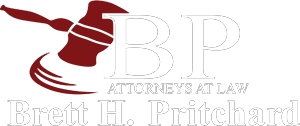Everyone is responsible for their own actions – including their mistakes. There is no driver in the State of Texas (or in the nation at large) who is not well aware of the dangers of getting behind the wheel while under the influence of alcohol. That being said, in the State of Texas, a bar that serves a patron to the point of obvious inebriation or impairment can share the legal responsibility if that patron’s impairment leads directly to a car accident. Such cases are known as dram shop cases, and they represent an important segment of the law.
The Texas Dram Shop Law
The Texas dram shop law includes the following two necessary components:
Someone who serves alcoholic beverages under the authority of a state license or permit must not sell or – otherwise provide – an alcoholic beverage to a patron who is obviously intoxicated to the degree that he or she is a clear danger to himself/herself or others
The recipient of said alcoholic beverage or beverages must be the direct cause of an incident that causes injury to himself/herself or someone else
In addition to potentially bearing responsibility in a personal injury case, the establishment is also vulnerable to losing its liquor license.
Proving Your Claim
You were injured by an impaired driver, and his or her insurance coverage may not be robust enough to cover the full range of your significant physical, financial, and emotional damages. If the at-fault motorist was, indeed, over-served at a bar or restaurant, that establishment’s insurance coverage might also come into play. The matter of over-serving, however, can be difficult to prove. Nevertheless, the most salient point related to the Texas dram shop law is that it is on the books for a reason – and that is to hold not only inebriated drivers but also bars and other establishments that continue serving guests beyond the point of obvious inebriation accountable for their dangerous choices. Evidence against the bar or restaurant in question can include:
Eyewitness testimony from other patrons that the at-fault drivers exhibited signs of obvious intoxication
Any receipts or other evidence of how much the at-fault driver was served (and in what timeframe)
Gauging the at-fault driver’s level of intoxication at the time of the accident that left you injured in relation to what it must have been when he or she left the bar in question (a form of circumstantial evidence)







